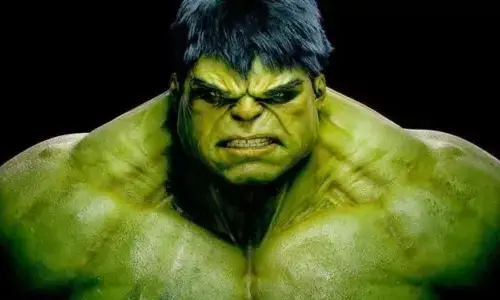10 amazing facts about world flags
You might not think there is much to know about the flags, other than that they are used to identify states.
It is easy to look at a flag and appreciate its color, shape and pattern, but have you ever wondered why flags are made in a certain way?
Here are 10 amazing facts about world flags that will make you want to know more.
Nepal has the only flag in the world that does not have 4 edges.

Did you know that the flag of Nepal is not a square or a rectangle?
The flag consists of two triangles, commonly known as pennants or pennants.
They are stacked to form flags.
The flag has a crimson background representing courage and the blue strip on the flag represents peace.
There are two symbols, one in each triangle, that has a sun and crescent moon.
There are only two square flags in the world.

Right;
One of the three flags of Nepal as mentioned above is triangular, but the other two are Switzerland and the Vatican City.
At first, not everyone thinks that the Vatican City is their own country, but in fact it is the smallest recognized country in the world.
The flag used for Vatican City was adopted on 7 June 1929.
It is one of the two square flags of the world and is half yellow or half yellow and half white.
On the white segment located to the right of the flag, there is the emblem of the Vatican.
The second square flag in the world is the flag of Switzerland, often confused with the medical flag used by the Red Cross.
It is a red square with a white cross in the middle.
The flag represents freedom and honor, the white cross symbolizes Christianity and the red background represents the blood lost to maintain their faith.
Symbols used on flags often have a specific meaning.

There are many universal symbols used on flags.
Not every flag has one, but flags do, which will usually display any of the following;
Some of these symbols have important implications for each country.
To give an example, Japan is referred to as "Land of the Rising Sun", and so they have a circle in the middle of the flag representing the sun.

As an emblem on the flag, it was first used by the Ottoman Empire, but now it is used by many Muslim countries, such as Azerbaijan, Turkey, Tunisia and Malaysia.
The star and crescent moon is a recognized symbol that represents Islam;

This appears on many flags and often links back to religion, to represent Christianity.
This can be seen on the flags of Great Britain, Georgia (Country), Norway, Sweden and Denmark.
There is also the Nordic Cross, found on all Scandinavian flags, which also symbolizes Christianity.
There are other symbols used to represent Christianity, but the cross is most commonly used.

Some countries will use their national bird on their flags to reflect their national heritage, like the flag of Ecuador featuring a bird in the Andes known as the Condor.
Other nations will use ferocious animals like lions to represent courage and strength.
There are also countries that use fictional animals, such as the dragon's flag of Wales and the flag of Albania with a two-headed eagle.
The colors used for flags are often associated with the history of the country.

Most flags of the world use similar colors, usually the primary colors, red, blue, and yellow, but there are also some unique colors.
Here are some meanings of the most frequently used colors that can represent flags.
Red can be associated with bad things, and that's usually what it shows up in flags.
Portugal uses red to symbolize blood lost in their battle to keep the country, while Morocco uses red to show the courage and strength of its people.
Both assume that people have suffered throughout history so it is very important for them to show them on their flags.
Some of you might think the blue color would represent the sky or the ocean on the flags.
This can happen from time to time, but the use of blue can also have a deeper meaning and symbolize freedom and peace.
For many years, yellow or yellow has been used to represent wealth and energy as this may be related to the sun.
In most flags, green represents the rich nature of a nation or its agriculture, although it can also be used to symbolize hope and youthfulness.
This is not commonly used, but when it does, it can be used to symbolize national heritage, defeat enemies or the determination of a nation.
Purple is the rarest color used on a flag.

The most common color that can be found on the flag is purple.
Purple often represents royalty or wealth, so it might be surprising that today it is not used on more flags.
It can be found on the flag of Nicaragua and the flag of Dominica.
One reason why these are the only two countries using this color is purple dye, which has historically been expensive and difficult to buy.
Therefore other colors are preferred.
Neither flags were produced until the late 1900s, which meant dyeing was much easier to access than it was hundreds of years ago when the majority of other flags were designed.
This means that both countries can use this color at a lower cost and with less work.
Belize's flag has the most colors of any flag in the world.

There are many flags with intricate designs covering a lot of colors and it can be argued that there are so many colorful flags it is difficult to say exactly which flag is most colorful.
However, Belize's flag has a total of 12 colors, making it the most colorful flag.
The flag is blue, with a white circle in the middle with the logo and red bands on the top and bottom of the flag.
The coat of arms in the center depicts two people holding tools, the national emblem on either side.
There is a tree in the background, a floral design and a banner with text.
Denmark has the oldest flag in the world.

Flags have been used for hundreds of years but always change as countries evolve.
However, the flag used most consistently around the world is that of Denmark.
The red background with a single horizontal center stripe was first used in 1625 and remains today.
However, the design itself was created in 1219. In Denmark it is called Dannebrog, which means "Danish Fabric".
South Sudan has the newest flag in the world.

The newest flag in the world is the flag of South Sudan.
It was done after their second civil war ended;
The flag is made up of green, red, black, blue and a yellow star symbol.
For South Sudan, the red color represents the bloodshed for their country to gain independence, green represents nature and the land rich and the black represents people.
Blue is the symbol of the Nile and the yellow star above it represents unity.
There are white stripes between each color and they represent peace.
There are three different types of chess groups.

You might think that each flag is unique to its country and generally so but there are some consistent patterns and colors that we can see in the associated countries.
As we mentioned before, Muslim countries will often use the Stars and the Crescent Moon to represent their religious beliefs but there are many connections like this around the world.
There are 3 main categories used to group countries using the same colors on their flags.
These are the national flags using the colors red, white and blue and are located in Eastern Europe.
They were once united by the Soviet Union, but since independence, they have created their own flags using the same colors.
These countries include: Croatia, Czechia, Russia, Serbia, Slovakia and Slovenia.
The flags in this category use only red, yellow and green colors and are all of African origin.
The countries in this category are: Benin, Cameroon, Republic of the Congo, Ethiopia, Ghana, Guinea, Guyana, Mali, Mozambique, Senegal, Togo, Zambia and Zimbabwe.
This includes flags that use only white, red, green, and black in their flags.
Typically these countries are based in the Middle East and they are: Iraq, Jordan, Kuwait, Sudan, Syria, United Arab Emirates and Western Sahara.
There are 4 flags in the world armed with guns.

You can look at the flags and think that they represent the history of a country through your choice of colors, symbols and shapes.
But there are some flags that use firearms to symbolize war or battles they experienced before peace was found.
Many will have items such as axes, arrows, cannons, swords, daggers, shields, spears, etc.

Mozambique's flag depicts an AK-47 walking across with an agricultural carpet above a book.
Mozambique's flag was adopted on 1 May 1983 and the use of rifles demonstrates the defense and vigilance of the country.

The flag of Guatemala depicts two rifles crossed behind a scroll which, for them, represents a readiness to defend itself as a nation.
The flag of Guatemala was adopted in 1871.

The display of guns on the flag of Haiti is much different from that of Mozambique and Guatemala.
Instead of passing races, they are presented as a trophy on the top of a green hill.
This represents their independence and they have used this flag since February 26, 1986.

Finally, Bolivia, where subtly has two guns crossed on the emblem background.
It shows cross-firing guns, similar to Guatemala, representing nations ready to defend themselves.
The original flag was adopted in 1851
As you can see, there are many parts that make up a flag, the choice of color to represent the history of the country, the usage of the emblem, emblem or emblem and even the shape.
So now that you have a better understanding of the flags of the world, why not look at the history of your flag and where it came from!
 52ºc, New York
52ºc, New York







